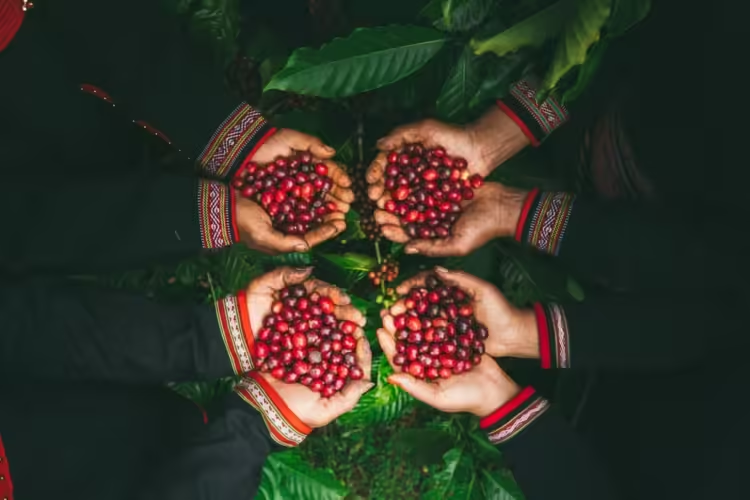

For many years, tree planting has been a standard sustainability apply on espresso farms and past—however new analysis finds that our power could also be higher directed elsewhere.
BY BHAVI PATEL
BARISTA MAGAZINE ONLINE
Featured photograph by Nay Sa Muel
A groundbreaking international meta-analysis has challenged the espresso business’s elementary method to carbon sequestration, revealing that many years of tree-planting initiatives could also be lacking the forest for the bushes—actually.
A complete research, revealed within the journal Nature Communications Earth & Surroundings, discovered that defending present shade-grown methods delivers exponentially higher local weather advantages than planting new bushes on intensively managed espresso farms. The analysis means that present carbon market incentives could also be leading to web environmental hurt.
The Scale of the Downside
Researchers from the Smithsonian Nationwide Zoo and Conservation Biology Institute and the Smithsonian Tropical Analysis Institute performed the primary international evaluation of carbon storage throughout espresso’s vegetation complexity gradient—from monoculture plantations to biodiverse agroforestry methods.
Presently, espresso farms maintain an estimated 481.59 teragrams of carbon (TgC) globally and will sequester an extra 81.53-86.50 TgC below totally different agroforestry adoption eventualities. Nevertheless, greater than twice as a lot aboveground carbon—174.23-221.45 TgC—may very well be misplaced below intensification eventualities the place present shade bushes are eliminated.
“Tree planting applications in espresso can sequester significant carbon volumes however could fail to realize international carbon and biodiversity objectives if they don’t additionally shield present agroforestry and diversify planting efforts,” the research concludes. In different phrases, planting new bushes—in the event that they aren’t the proper bushes—could also be doing extra hurt than good to the atmosphere.


The Carbon-Biodiversity Disconnect
Whereas tree range helps general biodiversity in agroforestry methods, the research discovered it doesn’t independently enhance carbon storage, indicating that carbon and biodiversity outcomes could also be basically decoupled. Tree density, relatively than tree range, predicted carbon accumulation, suggesting that carbon-focused methods could inadvertently undermine biodiversity conservation.
“To guard nature and combat local weather change, espresso producers must give attention to planting a range of the precise bushes, not simply planting a excessive density of fast-growing bushes that seize carbon,” the research finds.


Historic Context and Market Failures
Till the Seventies, most espresso was produced in agroforestry methods, however by 2010, solely 24% was managed below a various shade cover. Advanced agroforestry methods with remnant native forest bushes—which display the best carbon shares—have been disappearing at an alarming tempo.
The analysis reveals a vital hole in carbon market constructions. Whereas substantial funding flows towards tree-planting on degraded farms, just about no monetary incentives exist to guard standing shade bushes exterior specialised certifications.
“There may be some huge cash behind planting bushes on degraded espresso farms, but there are principally no monetary incentives to guard standing shade bushes,” the research reviews. Planting shade bushes on monoculture espresso farms is a constructive step, however the research finds that tree planting alone can’t make up for what is misplaced when mature shade bushes are eliminated.



International Implications
The research’s eventualities reveal that even probably the most formidable tree-planting applications can not offset carbon losses from continued intensification. This highlights the vital significance of implementing safety mechanisms alongside creation initiatives.
The present aboveground carbon inventory in espresso methods represents roughly one-third of European temperate conifer forests, underscoring espresso agriculture’s important function in international carbon administration.
Shifting ahead, the espresso business faces a elementary alternative: proceed prioritizing simply quantifiable tree-planting applications or pivot towards more practical conservation methods. The research means that sustainable carbon administration requires a twin method—defending present agroforestry methods whereas strategically increasing shade cowl.
As carbon markets evolve, this analysis gives a roadmap for aligning espresso manufacturing with each local weather objectives and biodiversity conservation. The message is evident: Defending what we’ve could also be extra useful than planting what we hope to develop.
ABOUT THE AUTHOR
Bhavi Patel is a meals author specializing in espresso and tea, and a brand-building specialist with a background in dairy expertise and an curiosity in culinary historical past and sensory notion of meals.
Subscribe and Extra!
As at all times, you possibly can learn Barista Journal in paper by subscribing or ordering a difficulty.
Learn the August + September 2025 Concern totally free with our digital version.
Without spending a dime entry to greater than 5 years’ price of points, go to our digital version archives right here.


